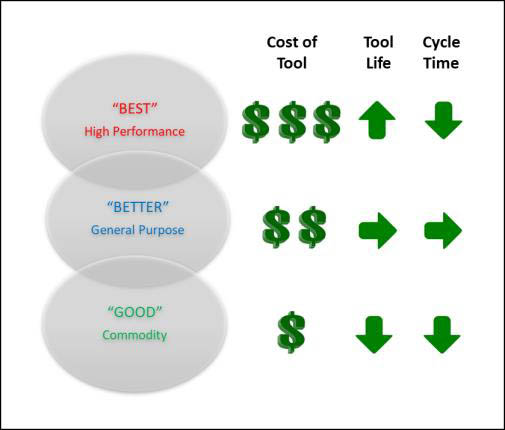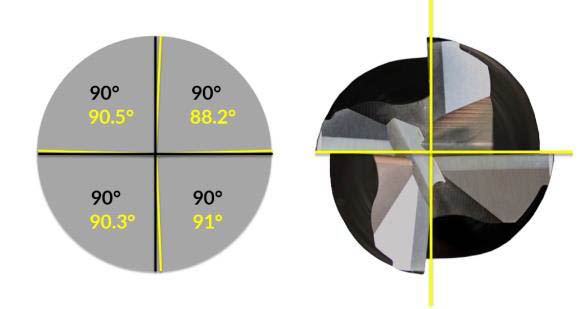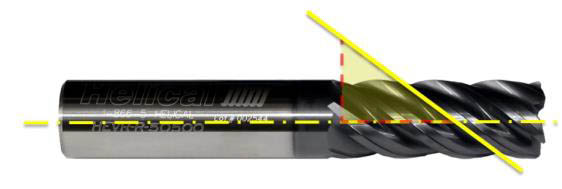.elementor-widget-text-editor.elementor-drop-cap-view-stacked .elementor-drop-cap{background-color:#69727d;color:#fff}.elementor-widget-text-editor.elementor-drop-cap-view-framed .elementor-drop-cap{color:#69727d;border:3px solid;background-color:transparent}.elementor-widget-text-editor:not(.elementor-drop-cap-view-default) .elementor-drop-cap{margin-top:8px}.elementor-widget-text-editor:not(.elementor-drop-cap-view-default) .elementor-drop-cap-letter{width:1em;height:1em}.elementor-widget-text-editor .elementor-drop-cap{float:left;text-align:center;line-height:1;font-size:50px}.elementor-widget-text-editor .elementor-drop-cap-letter{display:inline-block}
When you have a new job, and before you go to the old faithful 4-flute end mill you have been using for many years, we would like you to ask yourself a few questions:
- Would you like to reduce your overall cost and improve part quality?
- Would reducing your cycle times and getting jobs off the machine quicker be beneficial?
- Do you have trouble finding good employees to run your machines or know how to troubleshoot issues?
We at Triumph Tool work with our customers every day on all of these issues and more. This is the value you receive free of cost when doing business with us.
.elementor-column .elementor-spacer-inner{height:var(–spacer-size)}.e-con{–container-widget-width:100%}.e-con-inner>.elementor-widget-spacer,.e-con>.elementor-widget-spacer{width:var(–container-widget-width,var(–spacer-size));–align-self:var(–container-widget-align-self,initial);–flex-shrink:0}.e-con-inner>.elementor-widget-spacer>.elementor-widget-container,.e-con>.elementor-widget-spacer>.elementor-widget-container{height:100%;width:100%}.e-con-inner>.elementor-widget-spacer>.elementor-widget-container>.elementor-spacer,.e-con>.elementor-widget-spacer>.elementor-widget-container>.elementor-spacer{height:100%}.e-con-inner>.elementor-widget-spacer>.elementor-widget-container>.elementor-spacer>.elementor-spacer-inner,.e-con>.elementor-widget-spacer>.elementor-widget-container>.elementor-spacer>.elementor-spacer-inner{height:var(–container-widget-height,var(–spacer-size))}.e-con-inner>.elementor-widget-spacer.elementor-widget-empty,.e-con>.elementor-widget-spacer.elementor-widget-empty{position:relative;min-height:22px;min-width:22px}.e-con-inner>.elementor-widget-spacer.elementor-widget-empty .elementor-widget-empty-icon,.e-con>.elementor-widget-spacer.elementor-widget-empty .elementor-widget-empty-icon{position:absolute;top:0;bottom:0;left:0;right:0;margin:auto;padding:0;width:22px;height:22px}
Improve Your Costs, Quality, and Throughput!
It is important to determine your priorities when selecting end mills, as there are many ways to improve your overall costs. Our Good-Better-Best strategy allows us to dial in the best option from our deep selection of end mills.

It could be that you have many components to make, or very few, but the components require a great deal of metal removal. Maybe your component is very expensive, and you can’t afford any quality issues or scrap. Cycle time savings are often important, and you measure your cost per piece versus the sticker price of the tool.
3 Factors to Consider When Choosing an End Mill
As mentioned, there are more than a few factors to consider when deciding on what end mill to choose. Let’s look at some key characteristics that differentiate high-performance (HP) versus general-purpose (GP) tooling.
1. Purchase Price
HP tooling will cost you more to buy but will save you a lot of money throughout the year when applied correctly!
HP tooling is specifically designed to optimize performance and productivity in demanding machining applications. These tools are engineered with advanced materials, specialized coatings, and precision geometries that enhance their durability, tool life, and cutting performance.
- Extended tool life: HP tooling is built to withstand high speeds, feeds, and challenging materials, resulting in significantly longer tool life compared to GP tooling. With increased tool life, you’ll experience fewer tool replacements, reducing your overall tooling costs.
- Improved productivity: High-performance end mills are designed to remove material quickly and efficiently. The ability to complete jobs faster means you can increase throughput and achieve higher productivity levels.
- Enhanced part quality: The improved cutting performance and stability minimize tool deflection, chatter, and vibration, resulting in better surface finishes and tighter tolerances. This translates to higher part quality and reduced rework or scrap.
2. Material You Are Machining
Specific geometry, edge prep and coating is applied to the end mill to improve the overall performance you will achieve, for example:
- Non-Ferrous Material: These end mills for materials such as aluminum or copper typically have a sharper geometry and have less flutes (2 or 3.) This is because non-ferrous cutting parameters run much higher than you would in a ferrous material. You need a deep flute gullet as the MRR (metal removal rate) generates lots of chips that need to be evacuated. You can also apply coating or polish to an aluminum end mill to minimize the abrasion when cutting. If you minimize the abrasion, you will have less tool wear, making the tool last longer.
- Ferrous Material: Materials such as steel, stainless, cast iron and super alloys are all quite drastic in their machinability, but some of the geometries, coatings and programming techniques are similar. The big difference is the parameters you will run where your SFM (Surface Feet per Minute) with Steel will be much higher than if you run the same end mill in 718 Inconel. Most end mill companies have a strategy of separating steel and super alloy products in their standard offering. The biggest difference in most cases is the coating that will give you best results. However, there are in some cases benefits to changing the geometry to improve performance.
3. Flute Count and Geometry
As mentioned above, non-ferrous typically best performs with a 2- or 3-flute on the end mill. When it comes to ferrous materials, you have many more options. Most companies have adopted a 5-flute end mill as their go-to for roughing and finishing versus the long-standing 4-flute end mill. In many cases, by using different programming strategies and HEM (High Efficiency Machining) or Dynamic milling techniques, you can increase your flute count.
Have you considered using a 7-flute or more for semi-finish or finish applications? When you consider this as an option, it opens some of the following benefits:
- Faster cycle times!
- More flutes keeping your FPT (Feed Per Tooth) the same increases your I.P.M (Inches Per Minute), reducing your cycle time.
- More flutes will make you lower your RDOC (Radial Depth of Cut) which will allow you to feed at a higher FPT due to a chip thinning effect, learn more here from our friends at Harvey Performance – Chip Thinning Explanation
- Improved quality!
-
- The higher the flute count, the larger the core diameter of the end mill, making it stronger. This allows you to machine at elevated data but it also creates a straighter wall with less deflection.
- Note that this only will happen if you also use quality high-performance tool holders that we can also help you with.
- Less Horsepower!
-
- More flutes on your endmill, reducing your RDOC will lower the horse power needed to drive the tool through the material. This effect will cause less wear and tear on your machine, saving you very expensive costs of fixing, bearing or anything to do with your machine.
HP tooling have come a long way with the way tool grinders have improved. One of the biggest issues for tool performance is harmonics that occur when you elevate your spindle RPM’s. To combat this, tool companies have designed tools using variable flute pitch and variable helix angle.
- Variable Pitch: Using a 4-flute tool with variable pitch as an example, the flutes could be spaced at 90.5 degrees, 88.2 degrees, 90.3 degrees, and 91 degrees (totaling 360°).

- Variable Helix: A variable helix creates irregular timing between cuts, and can dampen reverberations that could otherwise lead to chatter.

High-Performance End Mills Increase Productivity and Reduce Annual Spending
When you partner with Triumph Tool, you will work with a tenured technical representative that has the knowledge, expertise, and a wide range of tooling solutions available to find the perfect high-performance solid carbide end mill for your specific application.
We just touched on a few of the variables to consider when thinking about HP end mills but there are many more that our team consider before selecting the best tool. There may be instances in your applications that our experts can find inefficiencies that may seem redundant on the surface, but could improve your production rate significantly. Triumph Tool’s team thinks outside the box with our solutions. This can tremendously increase your company’s productivity and reduce annual spending.
Switching to a high-performance solid carbide end mill can easily improve these variables. If you are using a generic end mill, chances are, there is plenty of room for improvement in these areas and therefore, can lead to saving in annual spend when investing in the correct tooling. Contact Triumph Tool today to help find you the optimal solution for your specific application.